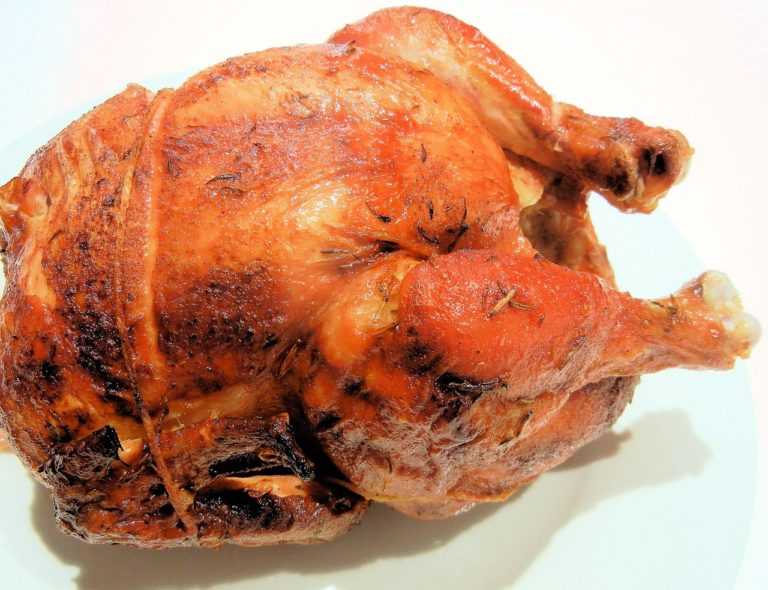What does it really mean to live to 100?
For many, the idea conjures balloons, morning show shout-outs, and a kind of awe reserved for the exceptionally lucky. But behind the milestone birthday candles lies a quieter, more complicated reality that Dick Van Dyke, now 99, knows intimately.
As one of the last living icons of Hollywood’s golden age, Van Dyke isn’t just defying time he’s bearing witness to it. And while his energy and smile remain intact, he doesn’t shy away from the emotional toll that comes with extreme longevity. “I’ve lost a lot of friends,” he admits, with a matter-of-fact grace that hits harder than any eulogy.
With centenarians projected to quadruple in the U.S. by 2055, his reflections aren’t just personal, they’re a preview of what more of us may face in the years ahead.
The Emotional Cost of Outliving Everyone You Know
For Dick Van Dyke, longevity hasn’t just meant seeing more years, it’s meant watching a lifetime of relationships slowly disappear. In recent interviews, he’s shared the emotional truth many don’t talk about: living longer often means grieving more. His plan to reunite with close friend Ed Asner for a revival of The Odd Couple was cut short by Asner’s passing in 2021. “That would’ve been such fun, and we lost it,” Van Dyke said. It wasn’t just the project he lost. It was yet another friend in a long line of goodbyes.
Gerontologists refer to this pattern as cumulative loss. Over time, the passing of close peers, colleagues, and lifelong companions doesn’t just cause grief it reshapes your entire social framework. It’s not simply the absence of people. It’s the absence of shared memory: the inside jokes, the lived history, the effortless comfort of someone who’s known you through every version of yourself.
This is more than emotional, it’s biological. The Centers for Disease Control and Prevention (CDC) reports that chronic loneliness in older adults is associated with a higher risk of heart disease, stroke, cognitive decline, and premature death. The U.S. Surgeon General even likened it to smoking 15 cigarettes a day. These aren’t just metaphors. Long-term social isolation can alter hormone levels, weaken immune function, and trigger chronic inflammation.
Despite being surrounded by fans and still appearing at public events, Van Dyke’s reality is shaped by a shrinking circle of meaningful relationships. “He’s outlived everybody,” his wife Arlene said plainly. Her words aren’t dramatic, they’re statistically likely. The average male life expectancy in the U.S. hovers around 75. Van Dyke has already exceeded that by nearly 25 years. And while his presence still lights up rooms, the people who once filled those rooms with him are largely gone.
For many aging adults, this is a quiet but heavy truth. It’s not just about living longer, it’s about learning how to carry the emotional weight of everything you’ve lost along the way.
How Van Dyke Maintains Emotional Resilience
The steady optimism in Dick Van Dyke’s voice isn’t performative. It’s a practiced mindset shaped by decades of loss, change, and adaptation. When asked how he remains upbeat despite outliving nearly everyone from his era, he doesn’t offer platitudes. Instead, he keeps it simple: “Life’s been good to me. I can’t complain.” It’s a perspective forged through experience not denial.
Psychologists describe this kind of late-life balance as resilient aging, the ability to absorb life’s emotional shocks without becoming immobilized by them. For Van Dyke, that resilience is rooted in a few key practices that research supports as protective in older age: maintaining close relationships, staying physically active, and continuing to pursue joy.
His marriage to Arlene, nearly five decades his junior, is more than companionship; it’s a daily source of emotional grounding. Studies consistently show that even one strong personal relationship can buffer against depression and cognitive decline in older adults. Arlene isn’t just a supportive spouse, she’s a vital connection to everyday intimacy and emotional continuity.
Then there’s humor. Van Dyke has built a career on making people laugh, but it’s his ability to laugh at himself and at the process of aging that truly stands out. Arlene has noted how her husband always finds a reason to smile, even in moments others might find somber. Laughter, especially self-directed humor, has been shown to lower stress hormones, boost mood, and even strengthen immune response. For him, it’s more than habit it’s survival.
Physical movement also anchors his emotional stability. At 99, Van Dyke still goes to the gym with Arlene three times a week. He doesn’t chase youth or appearances; he moves to stay connected to his body, to his mind, and to the rhythm of life. Exercise at any age promotes the release of brain-derived neurotrophic factor (BDNF), a protein that supports cognitive health, emotional regulation, and neuroplasticity. For older adults, consistent movement can mean the difference between decline and vitality.
Van Dyke’s formula isn’t secret or complex. It’s consistency, connection, and conscious perspective. He doesn’t ignore grief; he lets it live beside gratitude. That emotional balance may be the most enduring part of his legacy.
Staying Active and Creative: Keys to Late-Life Vitality
While many people in their 90s step back from public life, Dick Van Dyke continues to lean in. At 99, he’s not just showing up—he’s still performing, singing with his barbershop quartet, and accepting awards. In 2023, he made history as the oldest-ever Daytime Emmy winner for his guest appearance on Days of Our Lives. For Van Dyke, staying active isn’t a gimmick or a defiance of age; it’s simply what gives life structure and joy.
This kind of engagement reflects what researchers call purpose-driven aging. When older adults maintain a clear sense of purpose whether through work, hobbies, caregiving, or creative projects they’re more likely to retain cognitive function, have fewer depressive symptoms, and live longer. Van Dyke’s motivation isn’t to prove he “still has it.” It’s that he genuinely loves the work. “I’m a ham,” he said. “I get a jolt of energy from the audience.”
That kind of intrinsic joy matters. Studies have shown that older adults who participate in meaningful activities for their own fulfillment not because they feel obligated report better emotional health and life satisfaction. Whether it’s performing, painting, teaching, or volunteering, the act of creating and contributing helps preserve mental sharpness and emotional resilience.
Van Dyke’s physicality is also a big part of his longevity. From Broadway stages to Disney films, movement has always been part of his performance style. That didn’t stop as he aged. He famously danced in Mary Poppins Returns at 92 and more recently appeared in a Coldplay music video at 98. His mobility isn’t perfect, but it’s consistent. And that consistency protects more than his muscles; it protects his brain.
Regular movement helps maintain balance, cardiovascular health, and mood regulation all crucial factors in aging well. It also combats the slow erosion of identity that can occur with retirement or physical decline. For Van Dyke, movement isn’t about holding onto youth, it’s about staying connected to the activities that bring him to life.
Creativity and movement aren’t side notes in Van Dyke’s life, they are central. They aren’t just how he entertains others. They’re how he nourishes himself.
Longevity as a Public Health Trend And a Personal Challenge
Dick Van Dyke’s experience may seem unique, but it’s part of a much larger trend. As of 2020, more than 97,000 Americans were over the age of 100 a number expected to quadruple by 2055. Advances in medicine, nutrition, and lifestyle have pushed human lifespans farther than previous generations imagined. But while we’ve gotten better at keeping people alive, we haven’t always focused on helping them live well.
That distinction matters. The public conversation around longevity often celebrates age as an achievement in itself. But Van Dyke’s story reminds us that the number of candles on a cake doesn’t capture the full picture. What happens when your social network fades, your physical abilities change, and your emotional landscape is shaped more by memory than momentum?
For many aging adults, this shift brings challenges that are both personal and systemic. Healthcare systems aren’t always equipped to address the mental health effects of isolation. Social programs often overlook the emotional needs of people who’ve outlived their primary support networks. And despite the growing population of older adults, ageism in media, healthcare, and the workplace still limits opportunities for continued contribution.
Van Dyke’s visibility offers an important counter-narrative. He doesn’t deny the realities of aging he speaks candidly about the grief and changes it brings but he refuses to disappear into them. His continued presence in the public eye challenges outdated assumptions about what aging looks like. He’s not clinging to the past; he’s still actively creating, connecting, and adapting.
That model is especially important as more people enter their 80s, 90s, and beyond. Living longer isn’t just a medical milestone, it’s a social and emotional journey that requires intentional support. Van Dyke’s life underscores the need to view aging not just through a clinical lens, but as a human experience that includes joy, loss, meaning, and growth.
My Personal RX on Maintaining Your Health and Well-Being at Any Age
As a physician, I often tell patients that health isn’t a finish line, it’s a lifelong relationship. Whether you’re in your 20s or your 70s, the fundamentals of wellness remain the same: nourish your body, manage stress, move consistently, and stay connected to purpose and community. But how we apply those fundamentals evolves over time. What works in one decade may need adjusting in another. The key is to stay proactive and flexible, choosing habits and tools that meet your body where it is—so you can feel strong, clear, and balanced at every stage of life.
- Support Core Wellness from the Gut Up: Gut health influences everything from immunity to mood to energy. MindBiotic blends probiotics, prebiotics, and Ashwagandha to help regulate stress, support digestion, and promote total-body balance foundational at every age.
- Nourish Yourself with Age-Responsive Meals: The Mindful Meals cookbook offers over 100 recipes designed to reduce inflammation, support gut health, and fuel your brain and body with age-appropriate nutrients whether you’re boosting energy in your 30s or supporting joint health in your 60s.
- Stay Consistently Active Not Perfect: Regular movement supports bone health, cardiovascular strength, and brain function. Adjust the intensity as needed, but never stop moving.
- Get Quality Sleep, No Matter Your Age: Sleep affects everything from hormone balance to memory. Prioritize deep, consistent rest with a calming evening routine and tech-free wind-down.
- Manage Stress with Built-In Resets: Daily stress is unavoidable, but chronic stress is not. Incorporate breathwork, journaling, nature walks, or meditation to give your nervous system a break.
- Hydrate with Purpose: Proper hydration keeps joints lubricated, digestion smooth, and skin vibrant. Adjust intake based on your age, climate, and activity level.
- Keep Your Brain Engaged: Learn new skills, challenge your memory, and stay curious. Mental stimulation supports neuroplasticity and keeps your brain sharp across the decades.
- Watch for Small Changes: Listen to your body’s signals: persistent fatigue, digestive shifts, or mood changes are worth exploring early, not ignoring.
- Foster Social Connections: A strong support network improves longevity, reduces stress, and even boosts immune health. Prioritize meaningful relationships, at every age.
- Make Prevention a Habit, Not a Reaction: Stay up to date with screenings, stay informed about your family health history, and check in regularly with healthcare providers who take a whole-person approach.










 Subscribe to Ask Dr. Nandi YouTube Channel
Subscribe to Ask Dr. Nandi YouTube Channel










